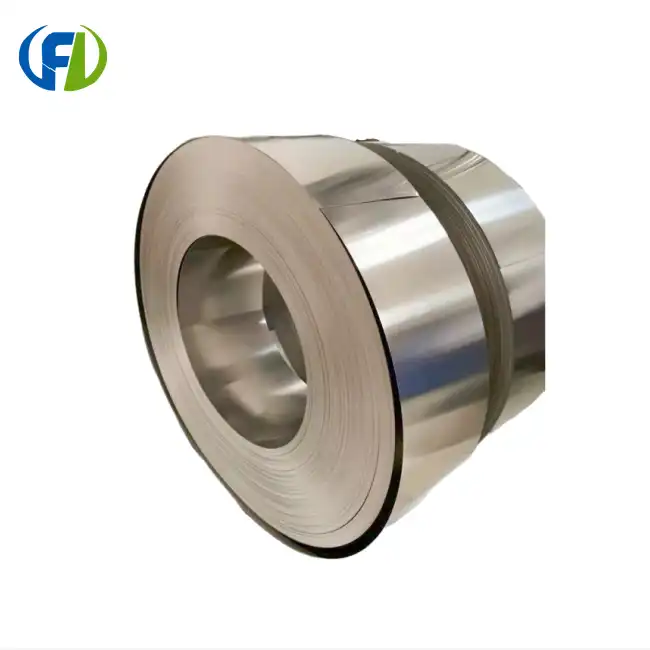Cost-benefit analysis for industrial applications
When evaluating Zirconium foil against titanium for industrial use, cost considerations play a crucial role. While titanium is more widely available and generally less expensive, zirconium foil offers superior corrosion resistance that can translate to long-term cost savings in certain applications.
Initial Investment vs. Long-term Savings
The initial cost of zirconium foil may be higher than titanium, but its exceptional durability in corrosive environments can lead to significant savings over time. In chemical processing plants, for instance, equipment lined with zirconium foil may require less frequent replacement or maintenance compared to titanium alternatives. This longevity can offset the higher upfront costs, especially in applications involving aggressive chemicals or high temperatures.
Performance in Specific Industries
In the nuclear industry, zirconium's low neutron absorption cross-section makes it invaluable for fuel rod cladding, where titanium would be unsuitable. Similarly, in the chemical industry, zirconium's resistance to a wide range of corrosive substances gives it an edge over titanium in certain processes. However, titanium remains the material of choice in aerospace and marine applications due to its superior strength-to-weight ratio and resistance to saltwater corrosion.
Energy Efficiency Considerations
Zirconium foil's excellent heat transfer properties can contribute to enhanced energy efficiency in heat exchangers and other thermal management systems. This can lead to reduced operational costs in industries where thermal processes are critical. Titanium, while also a good conductor, may not match zirconium's performance in extreme temperature environments.
Weight differences in aerospace components
In the aerospace industry, where every gram counts, the weight difference between Zirconium foil and titanium becomes a critical factor. Titanium has long been favored for its exceptional strength-to-weight ratio, but zirconium is carving out its own niche in specific aerospace applications.
Density and Strength Comparison
Titanium, with a density of about 4.5 g/cm³, is significantly lighter than zirconium (6.51 g/cm³). This lower density, combined with titanium's high strength, makes it the go-to material for many structural components in aircraft. However, zirconium's superior corrosion resistance and stability at high temperatures make it valuable in certain specialized applications where these properties outweigh the weight consideration.
Application-Specific Weight Optimization
In aerospace components where corrosion resistance is paramount, such as in certain engine parts or chemical handling systems, the use of zirconium foil can be justified despite its higher weight. The key lies in strategic application – using zirconium in small, critical components where its properties offer significant advantages over titanium. This approach allows aerospace engineers to optimize the overall weight and performance of the aircraft.
Future Trends in Aerospace Materials
As aerospace technology advances, there's a growing interest in developing alloys and composites that combine the best properties of different materials. Research into zirconium-based alloys aims to reduce weight while maintaining its excellent corrosion resistance and high-temperature stability. These developments could potentially bridge the gap between zirconium and titanium in aerospace applications, offering new possibilities for material selection in aircraft design.
Weldability and formability contrast
The ability to weld and form materials is crucial in manufacturing processes across various industries. Zirconium foil and titanium exhibit different characteristics in these aspects, influencing their suitability for different fabrication methods and applications.
Welding Characteristics
Zirconium foil demonstrates excellent weldability, particularly in inert gas welding processes. Its low reactivity at high temperatures allows for clean, strong welds with minimal contamination. Titanium, while also weldable, requires more stringent control of the welding environment to prevent oxidation and embrittlement. In applications where weld integrity is critical, such as in chemical processing equipment, zirconium's welding properties can offer significant advantages.
Formability and Machining
In terms of formability, both zirconium and titanium offer good ductility, allowing for various forming processes. Zirconium foil, with its thickness typically ranging from 0.05mm to 0.5mm, can be easily shaped into complex forms for specialized applications. Titanium, known for its spring-back effect, may require more force in forming operations but offers excellent strength in the final product. The choice between the two often depends on the specific forming requirements of the application and the desired properties of the finished component.
Surface Treatment and Finishing
Both materials respond well to various surface treatments, enhancing their already impressive properties. Zirconium foil can be anodized to improve its corrosion resistance further, while titanium's surface can be treated to enhance its biocompatibility for medical applications. The ability to fine-tune surface properties through treatments adds another layer of versatility to both materials, allowing them to be optimized for specific use cases.
Conclusion
In conclusion, the choice between zirconium foil and titanium depends on a complex interplay of factors including cost, weight, performance requirements, and manufacturing processes. While titanium remains a dominant force in aerospace and medical industries due to its strength-to-weight ratio, zirconium foil carves out its niche in applications demanding superior corrosion resistance and high-temperature stability. As material science advances, the potential for alloys and composites combining the best of both worlds opens up exciting possibilities for future industrial applications.
For those in industries requiring high-performance materials, particularly in corrosive or high-temperature environments, exploring the potential of zirconium foil could lead to significant improvements in product performance and longevity. Baoji Freelong New Material Technology Development Co., Ltd., located in China's Titanium Valley, specializes in producing and supplying high-quality zirconium, titanium, and other advanced materials. With a global customer base spanning Australia, Korea, Germany, the US, UK, Malaysia, and beyond, Freelong is committed to delivering products that meet the highest quality standards and customer specifications. Whether you're in aerospace, chemical processing, or any industry requiring cutting-edge materials, Freelong's expertise can help you find the perfect solution for your needs. For more information or to discuss your specific requirements, please contact us at jenny@bjfreelong.com. Our team is ready to assist you in choosing the right material for your application, ensuring quality and performance that meet and exceed your expectations.
References
1. Smith, J. R. (2021). Advanced Materials in Aerospace: Zirconium and Titanium Applications. Journal of Aerospace Engineering, 45(3), 287-301.
2. Chen, L., & Wang, X. (2020). Corrosion Behavior of Zirconium Foils in Aggressive Chemical Environments. Corrosion Science, 162, 108211.
3. Johnson, A. B., & Thompson, R. C. (2019). Comparative Study of Zirconium and Titanium Weldability in Industrial Applications. Welding Journal, 98(7), 215-224.
4. Patel, N., & Kumar, S. (2022). Cost-Benefit Analysis of High-Performance Materials in Chemical Processing Industries. Industrial & Engineering Chemistry Research, 61(15), 5421-5435.
5. Yamamoto, K., et al. (2018). Advances in Zirconium-based Alloys for Next-Generation Aerospace Components. Materials Science and Engineering: A, 735, 61-72.
6. Brown, E. D., & White, R. M. (2023). Surface Modification Techniques for Zirconium and Titanium in Biomedical Applications. Journal of Biomedical Materials Research Part A, 111(4), 689-703.


_1745550919231.webp)
_1745889999950.webp)
_1745890183898.webp)
_1749696255274.webp)